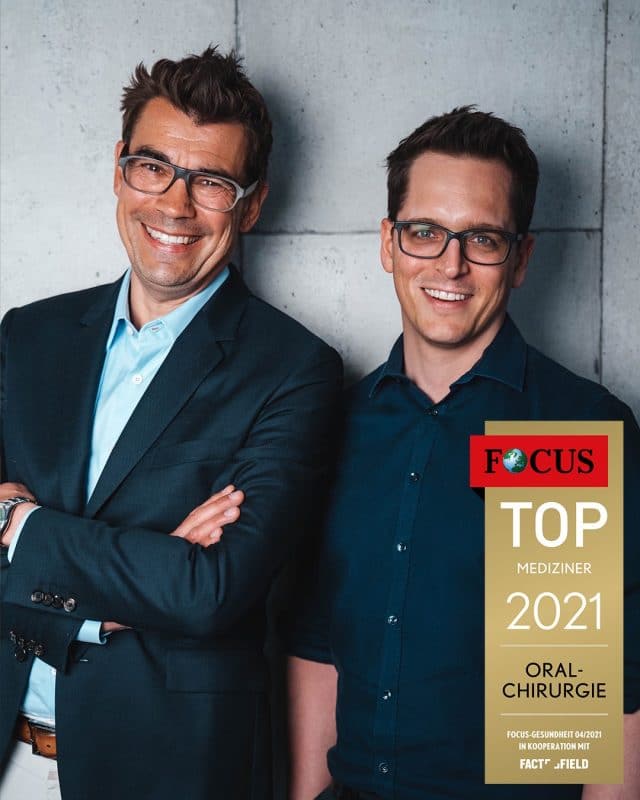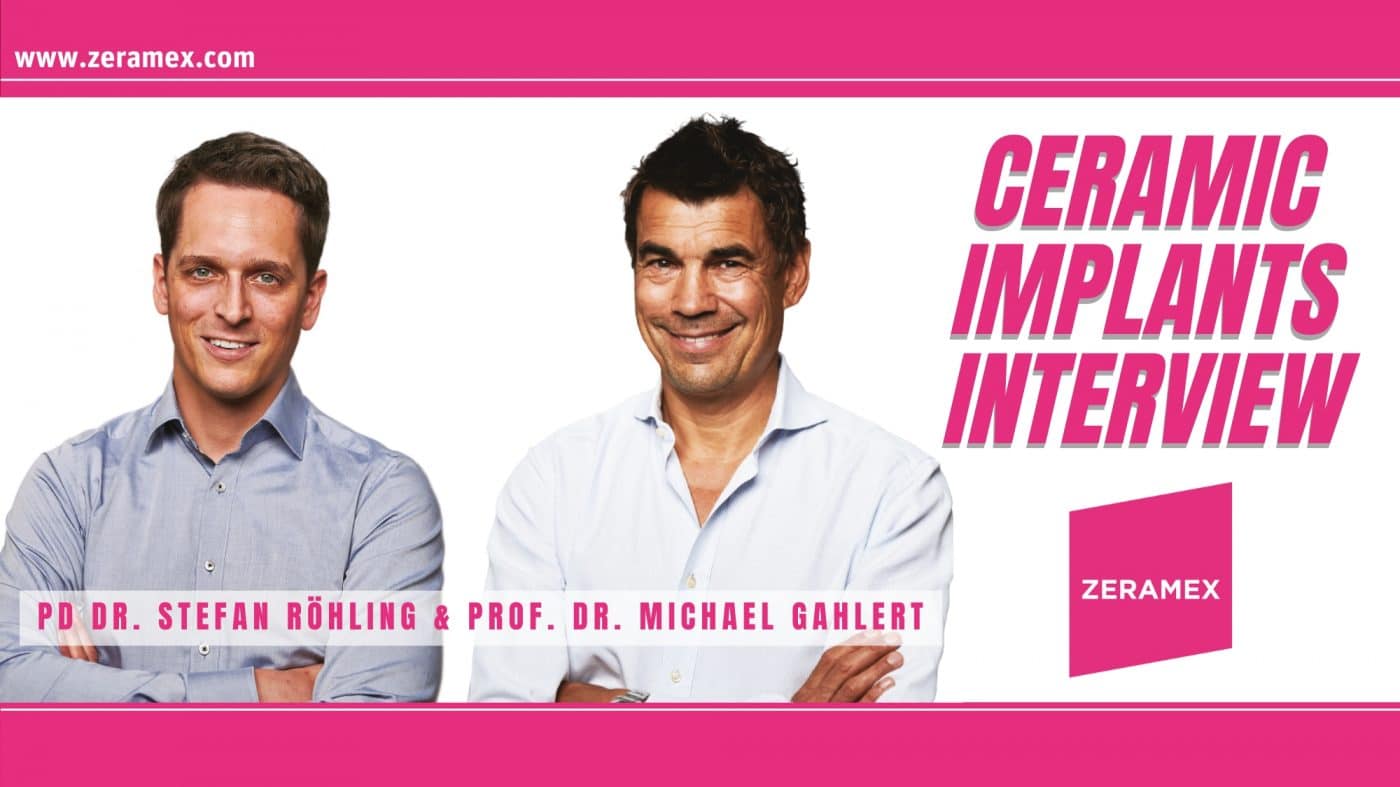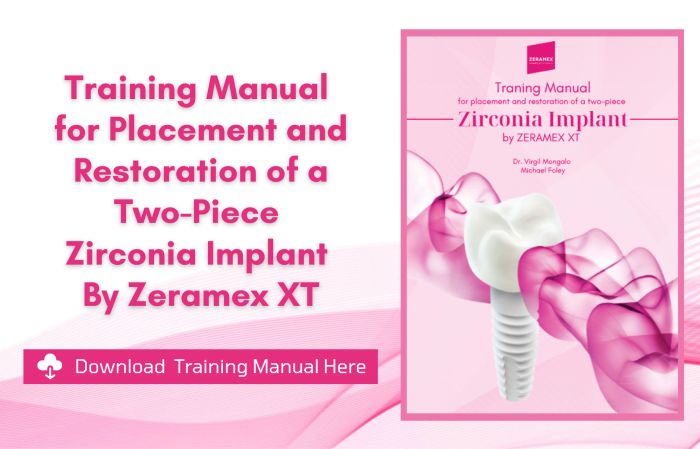Ceramic Implants Interview
with PD Dr. Stefan Röhling & Prof. Dr. Michael Gahlert
Together they run an oral surgery practice in Munich and are proven experts in the field of two-piece ceramic implants. In an interview, the surgeons Prof. Dr. Michael Gahlert and Priv.-Doz. dr Stefan Röhling on the advantages of ceramic implants and the attitude of patients towards them. They also clarify the question of whether the ceramic implant, which has priority over the titanium implant, has a future.
Dr. Röhling, together with Prof. Dr. Gahlert and other colleagues received the André Schröder Prize 2020 for their study Ligature-Induced Peri-implant Bone Loss Around Loaded Zirconia and Titanium Implants. What exactly did you observe there?
Dr Stefan Röhling: In this study, for the very first time, we examined the development of experimental peri-implantitis on ceramic implants in direct comparison to titanium implants. In the joint project together with Prof. David Cochran from San Antonio (USA), we were able to show that ceramic implants – during an active and spontaneous progression of the inflammation – resulted in significantly less bone resorption than titanium implants.
There is clinical evidence for better biocompatibility of ceramic implants. Does this have an impact on a reduced tendency to develop peri-implantitis?
Dr Stefan Röhling: The development of peri-implantitis is multifactorial. However, the attachment of bacteria to the implant surface in the form of a biofilm can clearly be regarded as one of the main reasons for the development of peri-implant inflammation. This biofilm accumulation depends not only on the physical (surface roughness) and chemical (surface energy or surface tension) surface properties, but also on the type of biomaterial used (titanium versus ceramic). Scientific studies have shown that – with a similar surface topography – there is less biofilm accumulation on ceramics than on titanium. The results of our experimental test are even more concrete. Therefore, based on the currently available data, it can be assumed that that biocompatibility influences the development of peri-implantitis. However, based on the current data situation, it is difficult to answer whether ceramic implants really have a lower tendency to develop peri-implant infections in the long term. However, the scientific data available so far is very promising.
Prof. Dr. Gahlert, you are currently working on a retrospective follow-up examination of two-part ceramic implants (Zeramex). Can you already share the first results with us?
Prof. Dr. Michael Gahlert: As part of a doctorate, we carried out a retrospective follow-up examination of 21 patients with our doctoral student and the University of Basel. 36 two-piece ceramic implants of the Zeramex XT type were examined. In addition to the collection of clinical parameters, the focus of the investigation was the abutment-implant connection by means of a carbon screw, which was not noticed in any of the cases investigated by complaints. The average loading phase of the ceramic implants was two and a half years and the survival and success rates are the same as comparable and established titanium implants.
How high is the proportion of ceramic implants in your practice?
Prof. Dr. Gahlert: If we look back at the last ten years, the proportion of ceramic implants used in addition to the use of titanium implants has constantly increased. As of today, I would put the proportion of everyday ceramic implants at 50 percent, especially in our practice.
One-piece titanium implants are almost non-existent. What is the role of one-piece ceramic implants in clinical use?
Dr Stefan Röhling: One-piece ceramic implants are certainly a niche product that only a few practitioners routinely use. Many clinicians are skeptical about the surgical and prosthetic handling and the fact that the superstructures can only be cemented. The two-piece ceramic implant designs are more in line with what the majority of colleagues want to use as the clinical handling can be compared to that of titanium implants. In our practice, one-piece ceramic implants are nevertheless an important factor in everyday clinical practice, because they can be used to achieve fantastic results in terms of white and red aesthetics, especially in the aesthetically relevant anterior tooth area.
In which cases would you rather use two-piece screw-retained ceramic implants?
Prof. Dr. Gahlert: With larger prosthetic restorations, the two-piece design offers greater prosthetic flexibility. In addition, we as treating implantologists feel more comfortable when the implants heal subgingivally or epigingivally, since the risk of early or incorrect loading due to protruding implant stumps is reduced. This problem still exists with the one-piece design, especially when patients wear removable temporary dentures during the healing phase.
The current trend in titanium implants is towards bone-level design. Does this also apply to ceramic implants?
Dr Stefan Röhling : Looking at the international market for titanium implants, more bone-level designs are used than tissue-level designs. This development is certainly due to increased prosthetic flexibility. In order to further establish ceramic implants on the market and to make them interesting for even more clinicians, it is absolutely necessary that reversibly screwed, two-piece bone-level designs, which allow the production of individual abutments, also become available for ceramic implants. However, when discussing bone-level versus tissue-level, not only the factor of prosthetic flexibility but also the underlying biological principle should be considered. It becomes clear that tissue-level design still has its justification in everyday clinical practice.
Is the interest in ceramic implants reflected in your patients?
Prof. Dr. Gahlert: We are always amazed at the variety of information that new patients who contact us about possible implant treatments come to our practice with. The Internet offers a great deal of information on this subject. Many also come because ceramic implants open up new possibilities for them that, from the patient’s point of view, could not be achieved with titanium.
Some of your colleagues still do not use ceramic implants. What do you think is stopping you?
Dr Stefan Röhling: Unfortunately, many users still do not have confidence in the available products. This is due to a lack of knowledge or communication deficits with regard to the material properties and reliability, but also to prejudices against ceramic implants. Negative testimonials from the past with ceramic implants made of aluminum oxide are often decisive. However, it must be noted that modern ceramic implants are made of zirconia and have significantly better biomechanical properties than ceramic implants made of aluminum oxide, which have not been available on the market since the mid-1990s. Therefore, these prejudices are no longer up-to-date: there is now sufficient scientific data
What advice would you give to colleagues working in private practice with regard to the advantages of ceramic implants?
Dr Stefan Röhling: Ceramic implants expand the spectrum of a practice and offer patients a reliable alternative to titanium. This fact is all the more important as patient demand for ceramic implants will continue to increase. In a study conducted by our research group, it was shown that tooth-colored ceramic implants are more attractive to patients than gray titanium implants. In addition, ceramic implants have advantages in demanding aesthetic indications and in compromised soft tissue conditions. In numerous clinical cases over the past decade, we have observed rapid, irritation-free and stable adaptation of the peri-implant mucosa.
Are there special cases in which you prefer ceramic implants, for example in the case of an aesthetic anterior tooth case?
Prof. Dr. Gahlert: In addition to the highly aesthetic treatment options in the upper front tooth area, as a periodontist, patients with former and genetically determined periodontal diseases are particularly important to me. Since ceramic implants have less bacterial affinity than titanium implants, ceramic implants are my first choice for dentures in these special cases.
How do you see the future of ceramic implants versus titanium implants?
Prof. Dr. Gahlert: One of the most significant aspects will be that ceramic implants will gain more acceptance than they may have now. Although a movement for ceramic implants has been set in motion worldwide and is constantly evolving, the data situation is still too patchy. My specific prognosis is that in five years after scientific confirmation of ten years of serious long-term data from different study groups and the continued positive clinical performance, ceramic implants alongside titanium will be indispensable.
About the Doctors
Prof. Dr. Michael Gahlert
Prof. Dr. Gahlert has specialized in implants and difficult oral surgical procedures. Prof. Gahlert holds various patents in the field of implantology and regularly gives lectures for colleagues from all over the world. Prof. Gahlert is also visiting professor for oral surgery at the Sigmund Freud Private University in Vienna.
PD Dr. Stefan Röhling
Dr. med. dent. Stefan Röhling, together with Prof. Dr. Michael Gahlert has a group practice for oral surgery in Munich and specializes in difficult oral surgery procedures. Since 2006, Dr. Röhling carries out studies in the field of ceramic implants and publishes the results in international specialist media.

Contact
Want to know more about Zeramex?
Email us at [email protected] with your contact details and we will get in touch with you!
ZERAMEX BROCHURE
Click here to download the Zeramex sales brochure



